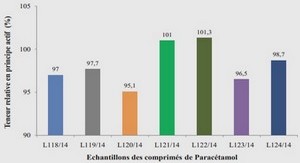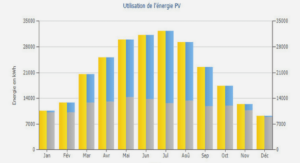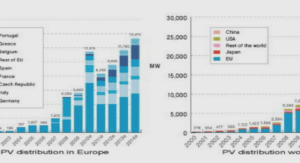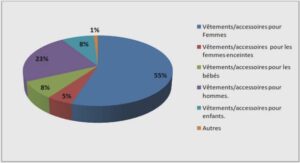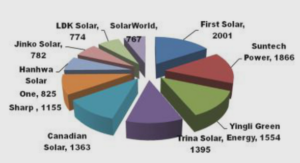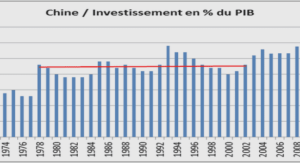The stability of some porous systems
Some functional analysis concepts
Let be an open subset of R n , n 2 N supplied with the Lebesgue measure dx: 2.1.1 Hilbert space Definition 2.1 A Hilbert space H is a vectorial space supplied with inner product hu; vi, such that kuk = hu; ui 1 2 is the norm which let H complete. 2.1.2 L P ( ) space Definition 2.2 Let 1 p < 1, and let be an open domain in R n , n 2 N. Define the standard lebesgue space L P ( ), by L P ( ) = u : ! R : f is measurable and Z juj p dx < 1 : The functional k:kLP defined by kukLP = Z juj p dx 1 p is a norm on L P ( ): 7 Chapter 2. Preliminary 8 Definition 2.3 For p = 1, we have L 1( ) = ( u : ! R : u is measurable and there exists a constant C such that juj C a.e in . ) : We denote kuk1 = inf fC, juj C a.e in g : Remark 2.1 For p = 2, L 2 ( ) equipped with the scalar product hu; vi = Z u(x)v(x)dx is a Hilbert space. Then kuk 2 L2( ) = hu; ui: Sobolev space Wm; p( ) Definition 2.4 (Sobolev Space) For any positive integer m and 1 p 1 , the W m; p( ) is the space defined by W m; p( ) fu 2 L p ( ) : Du 2 L p ( ) for 0 jj mg ; where Du is the weak (or distributional) partial derivative, and W m; p 0 ( ) the closure of C 1 0 ( ) in the space W m; p( ): Clearly W0; p( ) = L p ( ), and if 1 p < 1, W 0; p 0 ( ) = L p ( ) because C 1 0 ( ) is dense in L p ( ): Definition 2.5 ( The Sobolev Norms) We define a norm k:kW m; p( ) , where m is a positive integer and 1 p 1, as follows: kukW m; p( ) = 0 @ X 0jjm kDuk p Lp( ) 1 A 1=p if 1 p < 1 ; kukW m; 1( ) = max 0jjm kDuk1 : Definition 2.6 For p = 2, we denote H m( ) = W m;2 ( ); and H m 0 ( ) = W m;2 0 ( ): Theorem 2.1 Let u 2 W1; p(I), then u 2 W 1; p 0 ( ) if and only if u = 0 on @ : 2.1. Some functional analysis concepts
Existence and uniqueness theorem
The existence and uniqueness of a solution to weak formulation of the problem can be proved by using the Lax-Milgramís Lemma. This states that the weak formulation admits a unique solution. Lemma 2.1 (Lax-Milgramís Lemma) Let a(:; 🙂 be a bilinear form on a Hilbert space H equipped with norm k:kH and the following properties: 1) a(:; 🙂 is continuous, that is 9 1 > 0 such that ja(w; v)j 1 kwkH kvkH , 8w; v 2 H; 2) a(:; 🙂 coercive (or H-elliptic), that is 9> 0 such that ja(v; v)j
kvk 2 H , 8v 2 H; 3) L is a linear mapping on H (thus L is continuous), that is 9 2 > 0 such that jL(w)j 2 kwkH , 8w 2 H: Then there exists a unique u 2 H such that a(w; u) = L(w), 8w 2 H: Definition 2.7 An unbounded linear operator A : D(A) H ! H is said to be monotone if it satisfies (Au; u) 0, 8u 2 D(A): It is called maximal monotone if, in addition R(I + A) = H i.e. 8f 2 H; 9u 2 D(A) such that u + Au = f; where R(I + A) is the range of (I + A): Proposition 2.1 Let A be a maximal monotone operator. Then D(A) is dense in H. Theorem 2.2 (Hille-Yosida) Let A be a maximal monotone operator. Then, given any u0 2 D(A) there exists a unique function u 2 C([0; 1); D(A) \ C 1 ([0;1); H) satisfying 8 < : du dt + Au = 0 u(0) = u0: Moreover, ju(t)j ju0j and du dt (t) = jAu(t)j jAu0j , 8t 0: 2.2. Existence and uniqueness theorem
Semigroups of bounded linear operators
In this chapter we will present some definitions, some results on C0-semigroups, including some theorems on exponential stability.
Some definitions
Definition 2.8 Let H be a real or complex Hilbert space equipped with the inner product (;) and the induced norm k:k. Let A be a densely defined linear operator on H, i.e., A : D(A) H ! H: We say that is dissipative if for any x 2 D(A); Re (Ax; x) 0: Definition 2.9 A family S(t) (0 t > 1) of bounded linear operators in a Hilbert space H is called a strongly continuous semigroup (in short, a C0-semigroups) if (i) S (0) = Idx; (ii) S (t1 + t2) = S (t1) S (t2); 8t1; t2 0; (iii) For each x 2 H, S (t) x is continuous in t on [0; 1): For such a semigroup S (t), we define an operator A with domain D(A) consisting of points x such that the limit Ax = lim h
1 Introduction |
